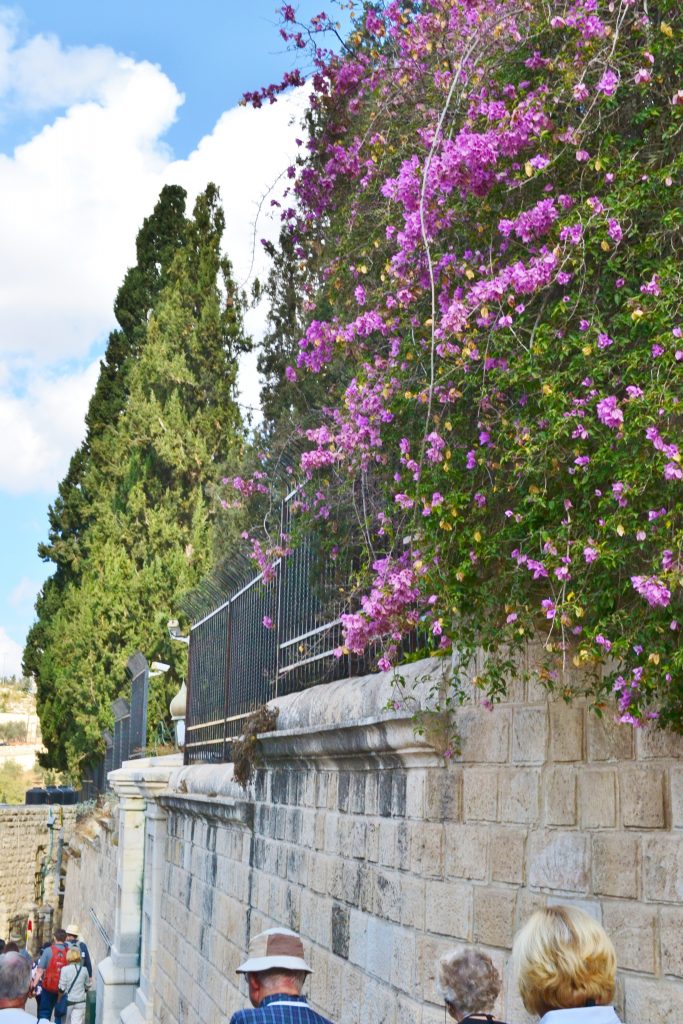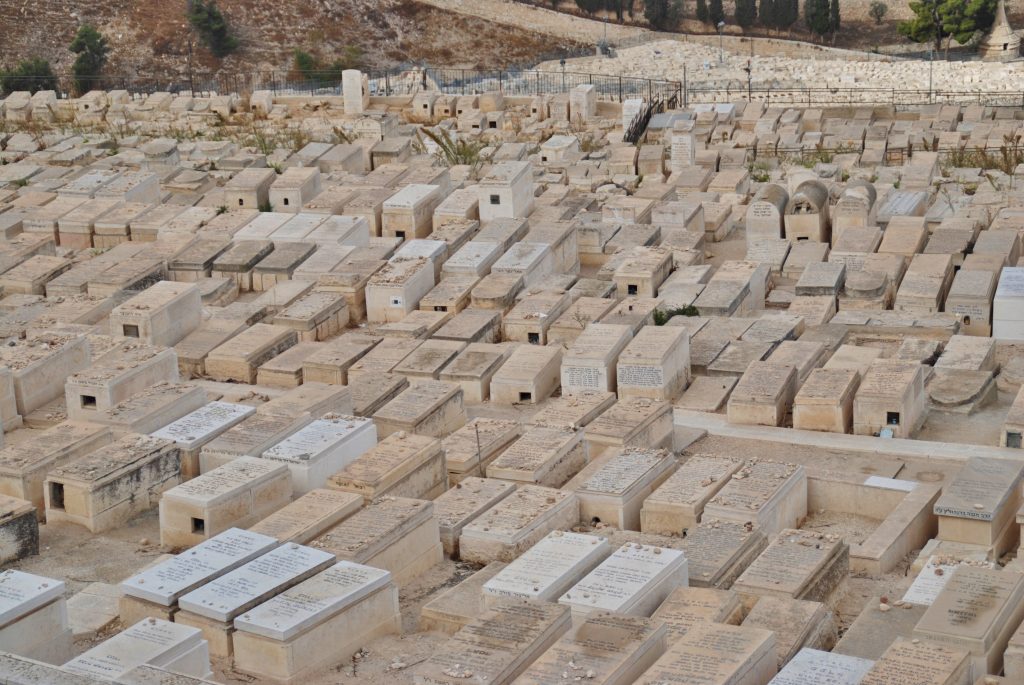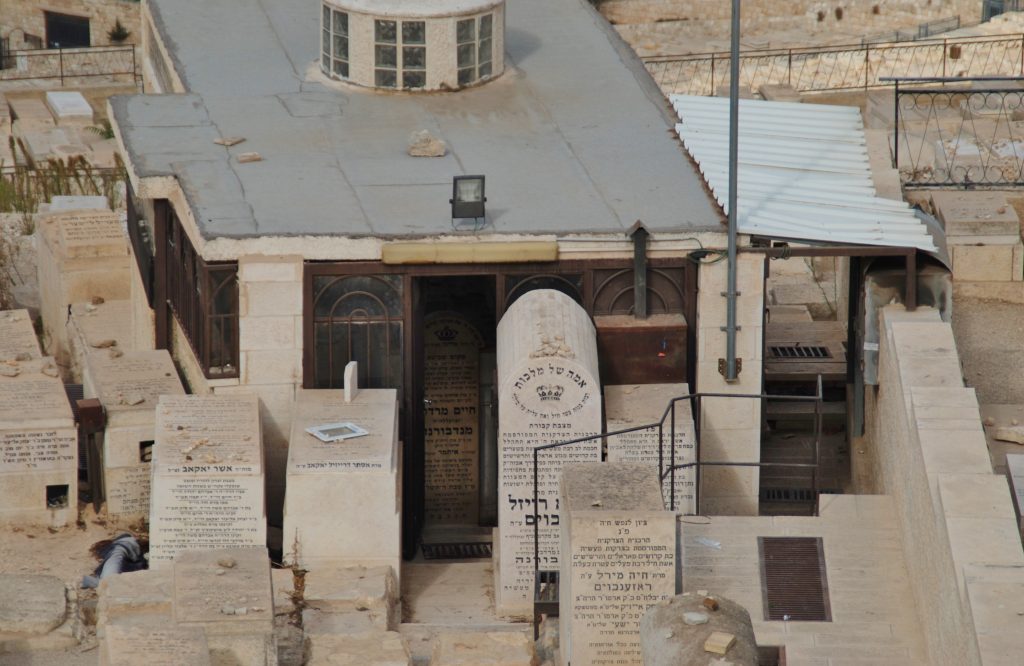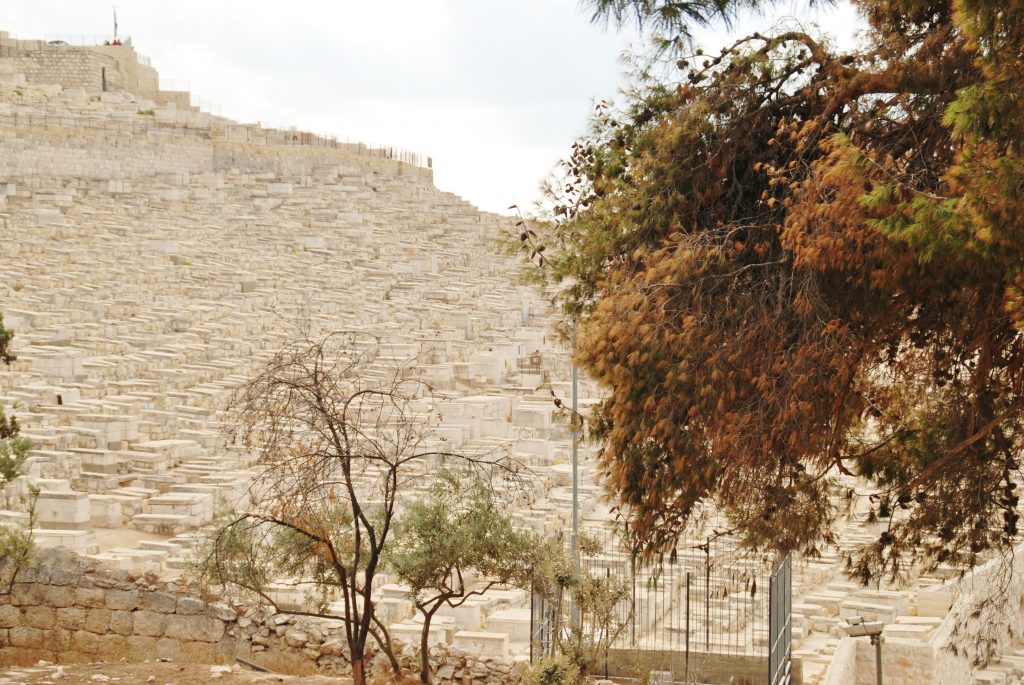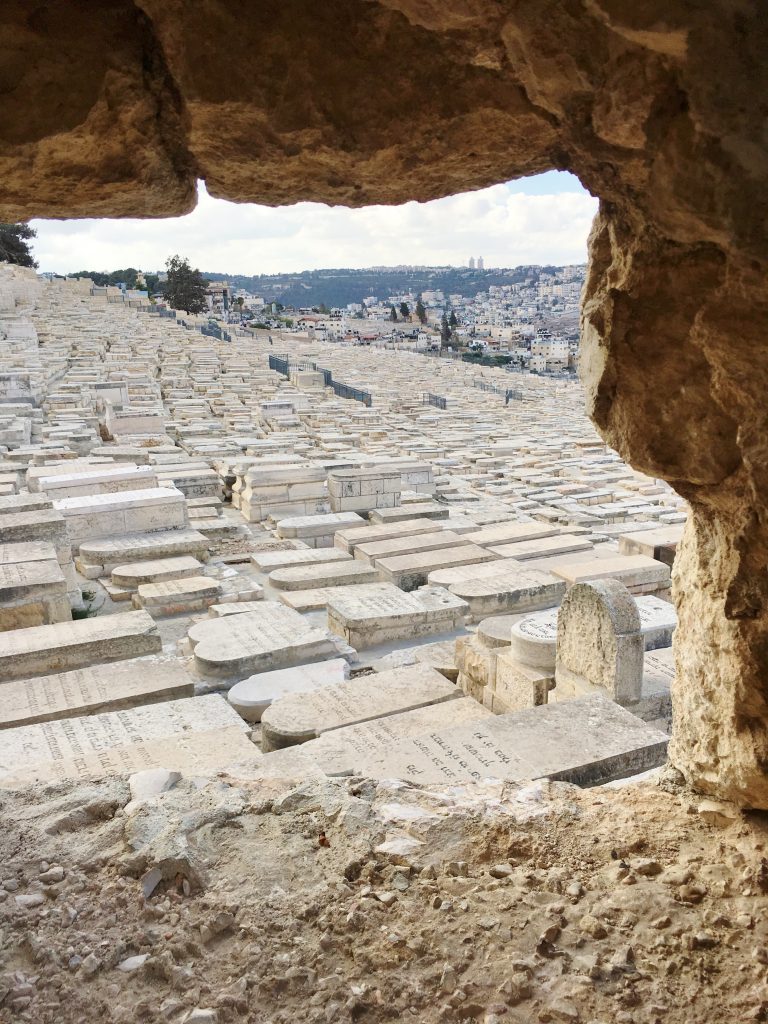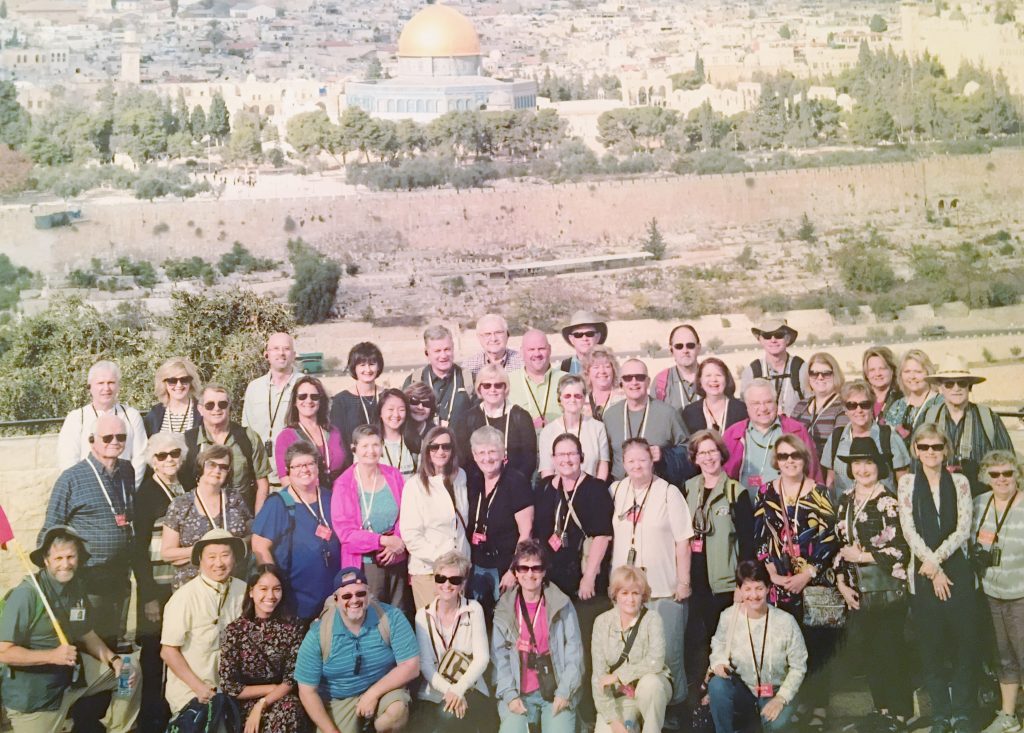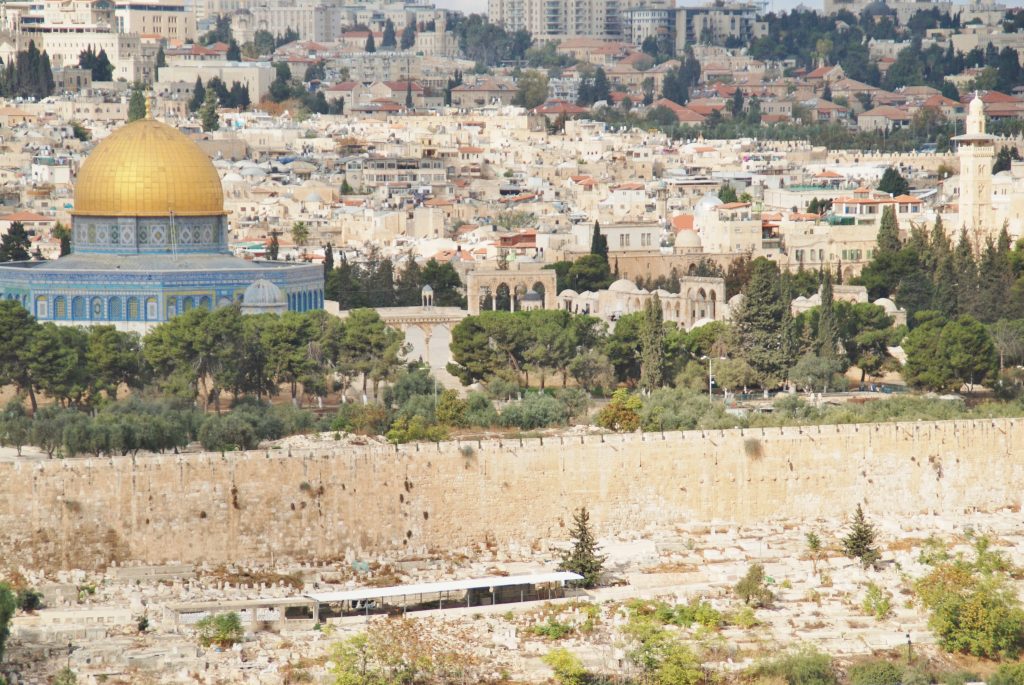
Standing at the overlook on the Mount of Olives, a breathtaking view spreads before me to include the Temple Mount and the city of Jerusalem. Once flourishing with olive trees, the site has become a holy place connected with events surrounding Jesus’ death and ascension into heaven.
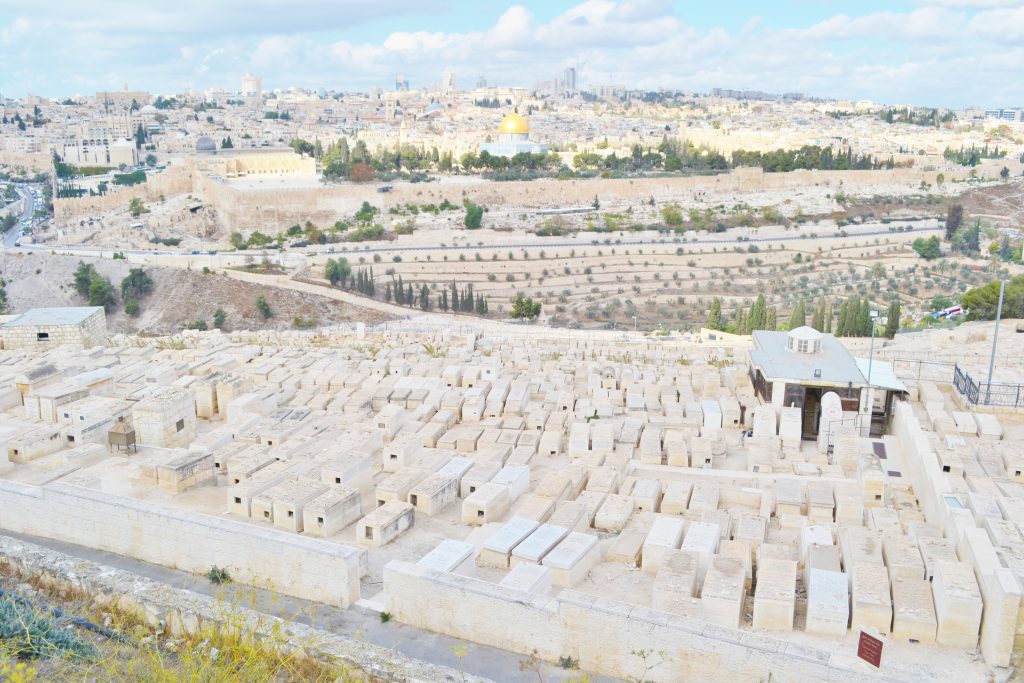
Tombs dating back to the First Temple period remain in the Kidron Valley outside of the city walls. The cemetery rises from the depths of the slopes of the Mount of Olives with over 150,000 graves. Considered the most important cemetery in Jerusalem, it is here that the highest ranking officials were buried. In addition, the Jews believe that the Resurrection of the Dead would begin here once the Messiah returns, which has only added to its popularity. The average cost for a Mount of Olives burial plot is close to $22,000.
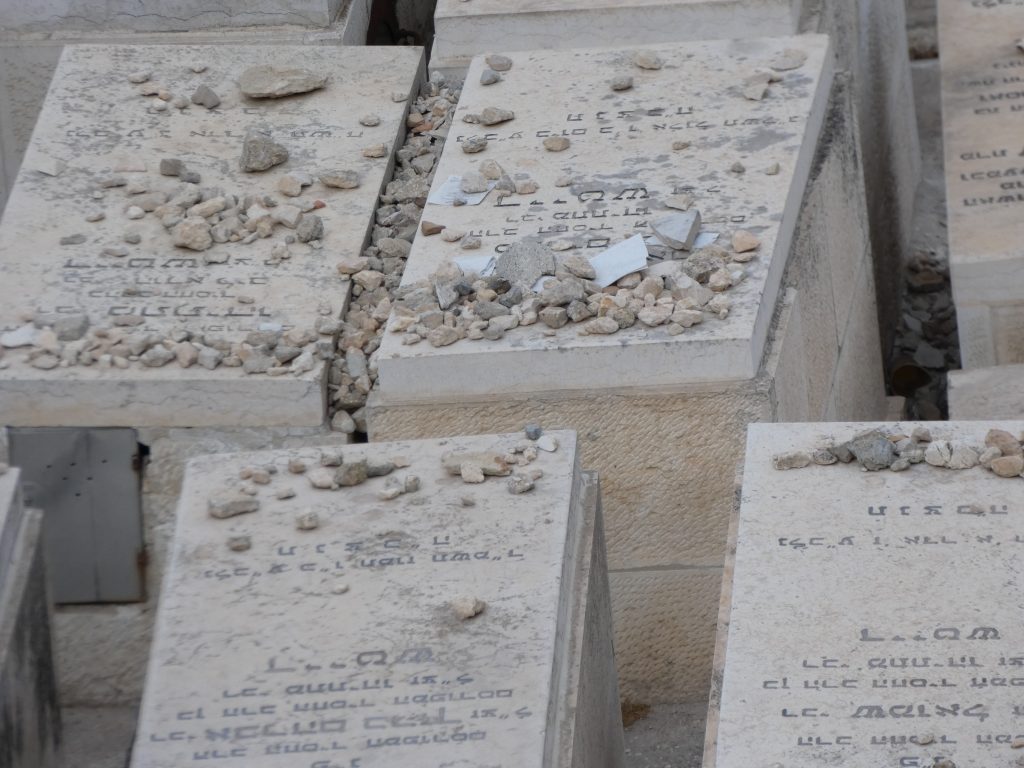
While taking photos of the cemetery, I happened to notice that there were rocks stacked on several of the gravesites. Our guide explained that this has been an ancient Jewish custom, yet several reasons explain this practice. Under Jewish law, the religious leaders were considered unclean if they “entered a place where there was a dead body.” Leviticus 21:11, therefore, it was thought that the stones warned the priests that they should stay away from this area. Another explanation comes from the Talmud which states that a person’s soul remains with the grave for a period of time, therefore, loved ones place stones on the grave to trap the soul on earth. Thirdly, some suggest that this practice may take place to keep evil spirits out of the graves, while others explain that the stones last longer than flowers and symbolizes a more permanent gesture in remembrance of their loved one.
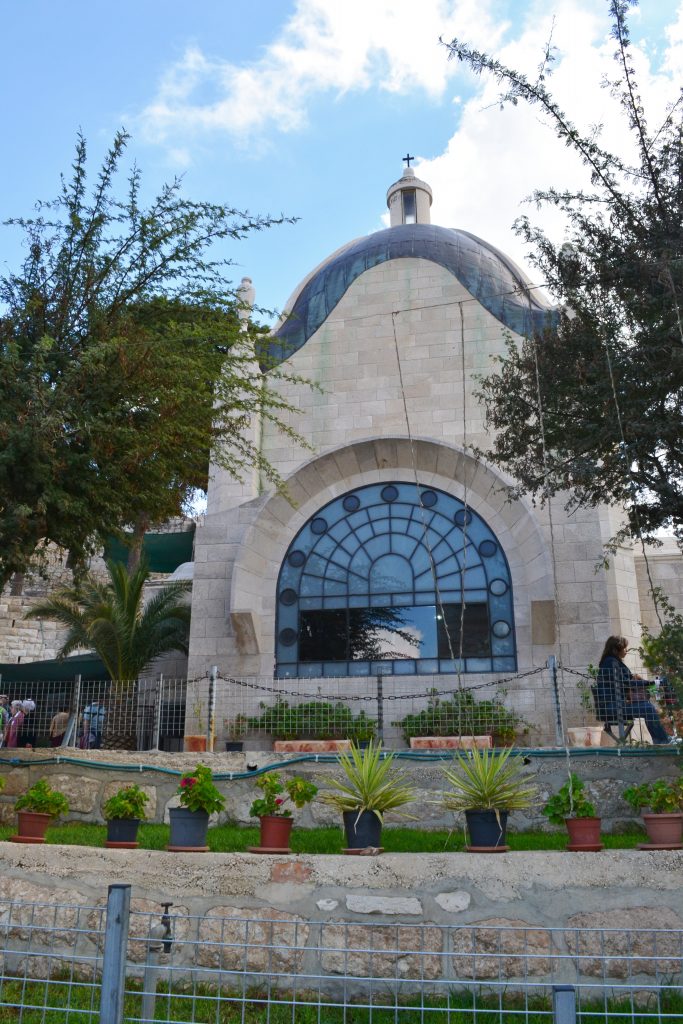
Taking in a final view of Old Jerusalem from the Mount of Olives, I was reminded of the time when Jesus wept over her as recorded in Luke 19: 41 – 44.
And when he drew near and saw the city, he wept over it, 42 saying, “Would that you, even you, had known on this day the things that make for peace! But now they are hidden from your eyes. 43 For the days will come upon you, when your enemies will set up a barricade around you and surround you and hem you in on every side 44 and tear you down to the ground, you and your children within you. And they will not leave one stone upon another in you, because you did not know the time of your visitation.”
The beautiful Dominus Flevit (Latin for “Jesus Wept”) Chapel commemorates Jesus’ prophecy over Jerusalem so we descended halfway down the slope of the Mt. of Olives for a visit. Pilgrims identified a rock as the one where Jesus wept and built a monastery over the site in the 5th century.
In 1955, Italian architect Antonio Barluzzi was commissioned to build the current chapel. Designed in the shape of a teardrop, the church resembles Jesus’ heartbreak for the city of Jerusalem as he foretold its demise. Within nearly 40 years after His ascension, the Romans burned down the Second Temple and destroyed the city, fulfilling His prophecy.
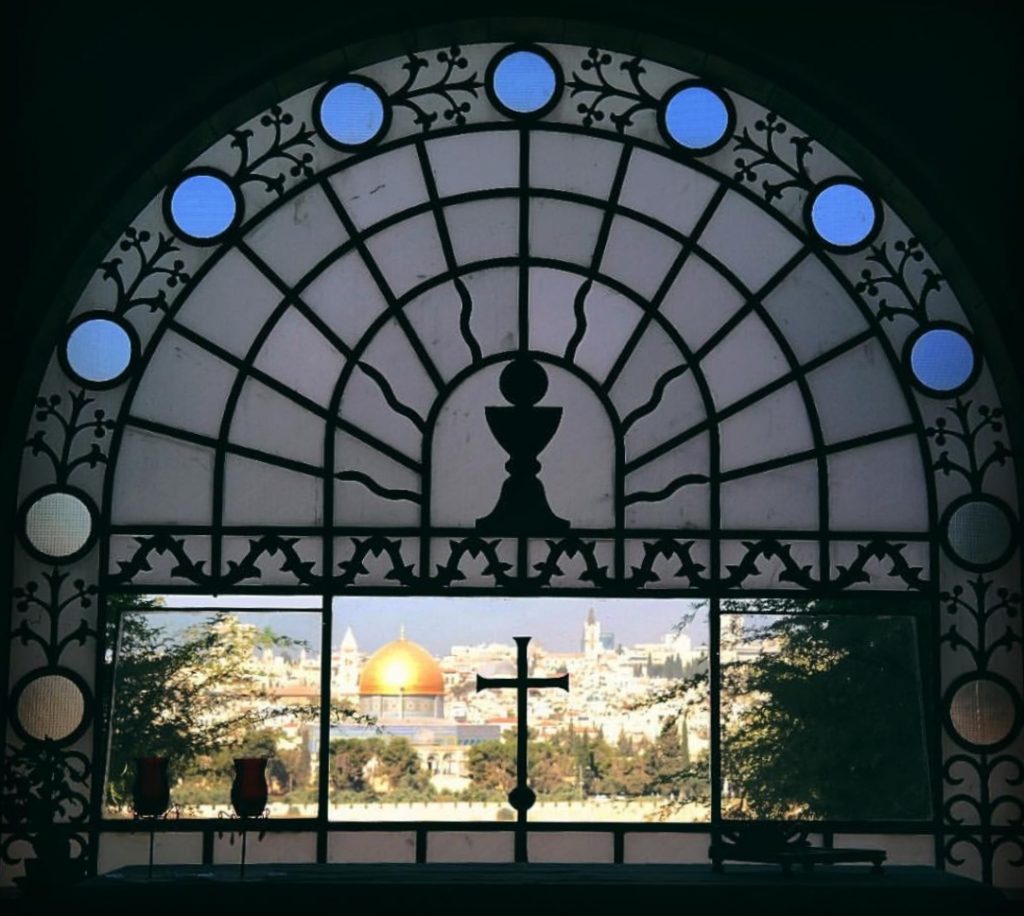
Four vases at each corner of the church represent the custom of collecting one’s tears at the death of a loved one. Inside the church is an ornamental west window that provides spectacular views of Old Jerusalem and the Temple Mount.
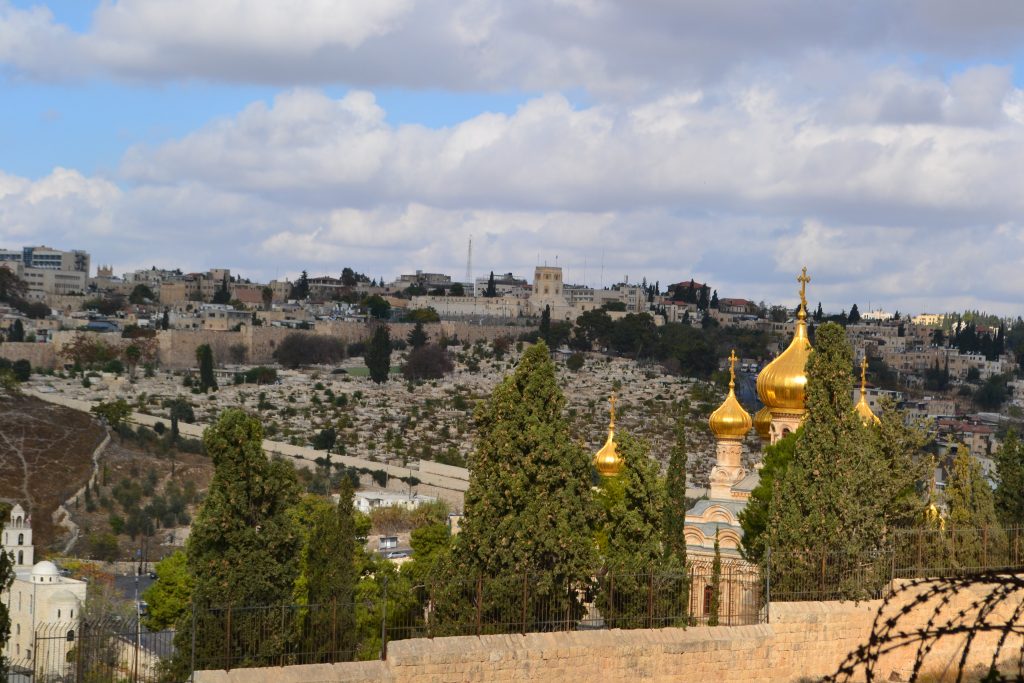
After touring the Dominus Flevit Chapel, we were ready to visit the Garden of Gethsemane. In the distance we could see the golden domes of the Russian Orthodox Convent of St. Mary Magdalene. Built by Czar Alexander III, it was a memorial to his mother whose patron saint was Mary Magdalene. Unfortunately the church was closed on the day of our tour because it is only open on Tuesdays and Thursdays from 10 am to noon.
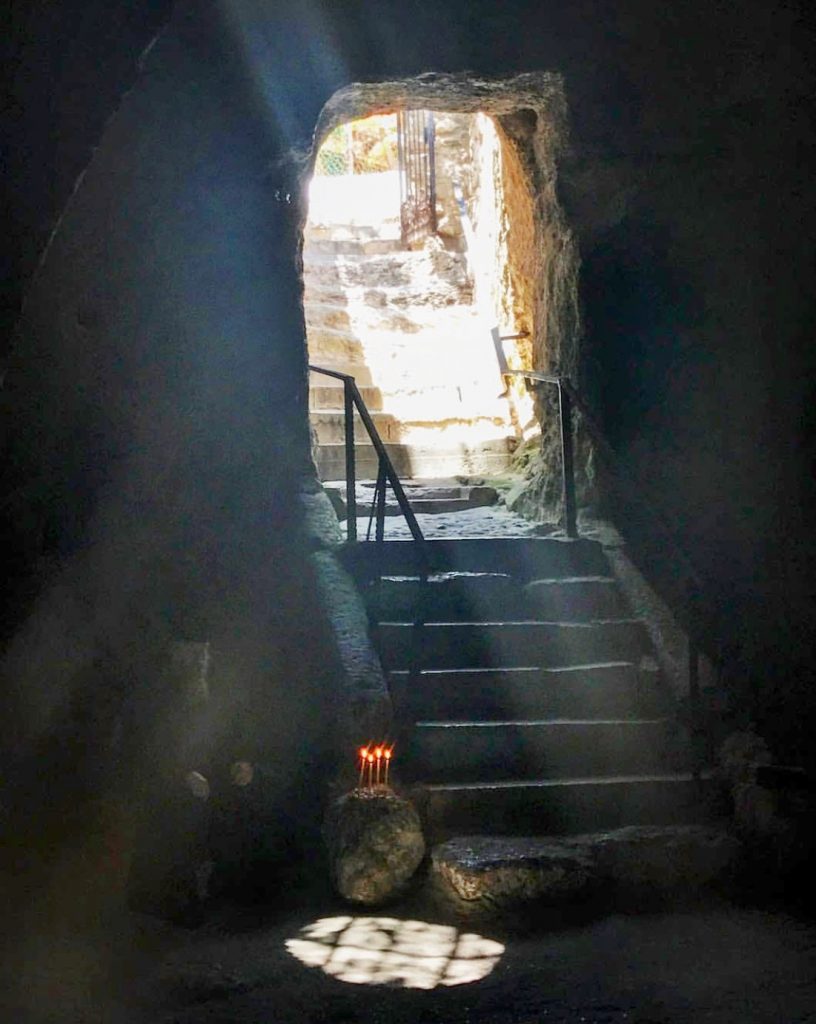
There are additional sites of notable significance located on the Mount of Olives. The Tomb of the Prophets is considered to be the traditional location of the burials of three memorable prophets of Israel: Haggai, Zachariah and Malachi. Entering the caves, there is an attendant providing lit candles for exploring the burials sites of these holy men.
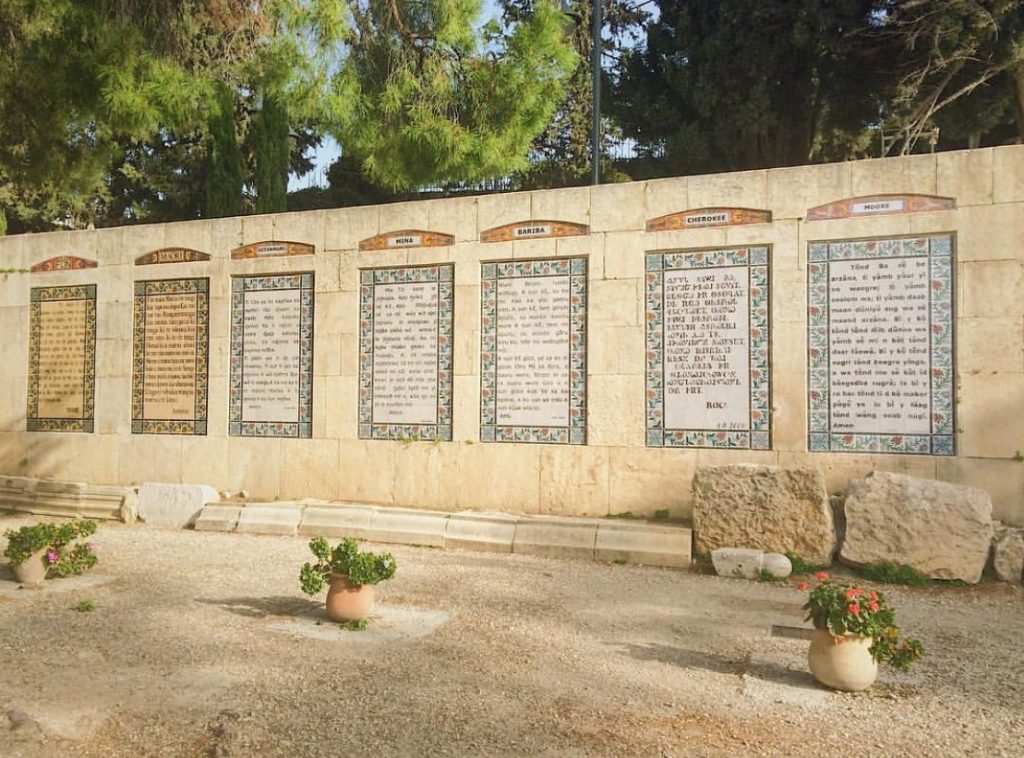
The Church of the Paster Noster is a Roman Catholic church said to have been built over the cave where Jesus taught the Lord’s Prayer. Beautiful tiles display the Lord’s Prayer in over 100 languages.
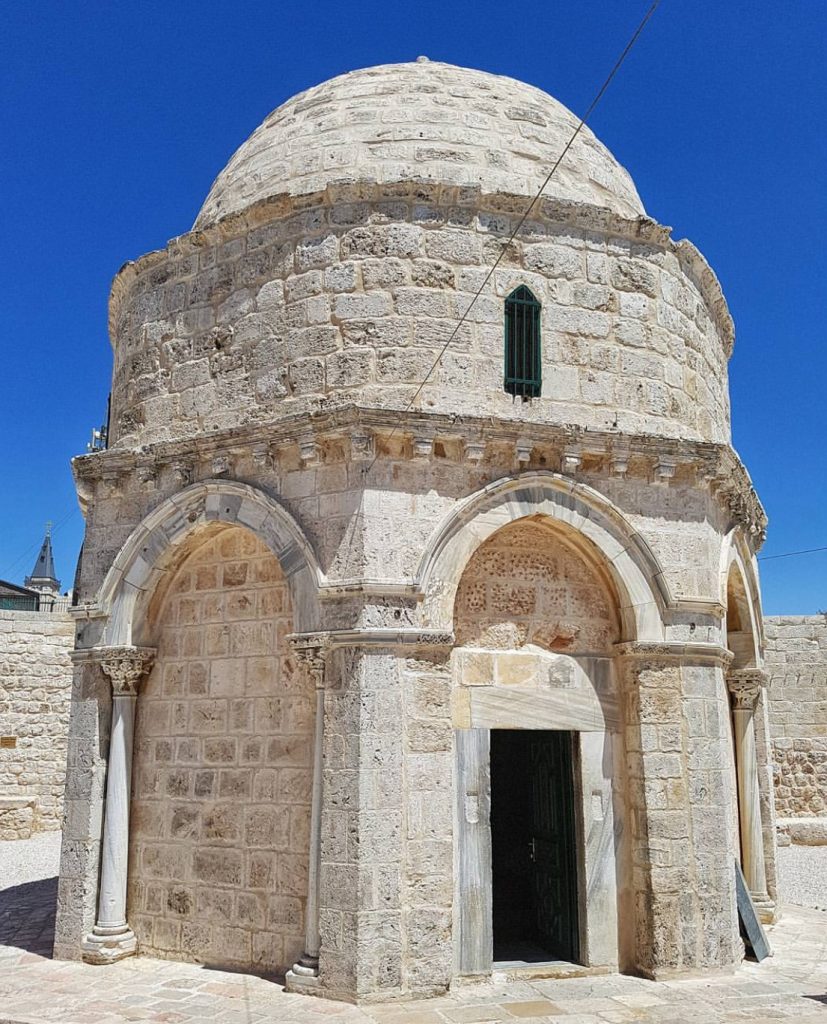
The Mosque of the Ascension, once a Christian chapel in the medieval times, is the supposed site of Christ’s Ascension into heaven.
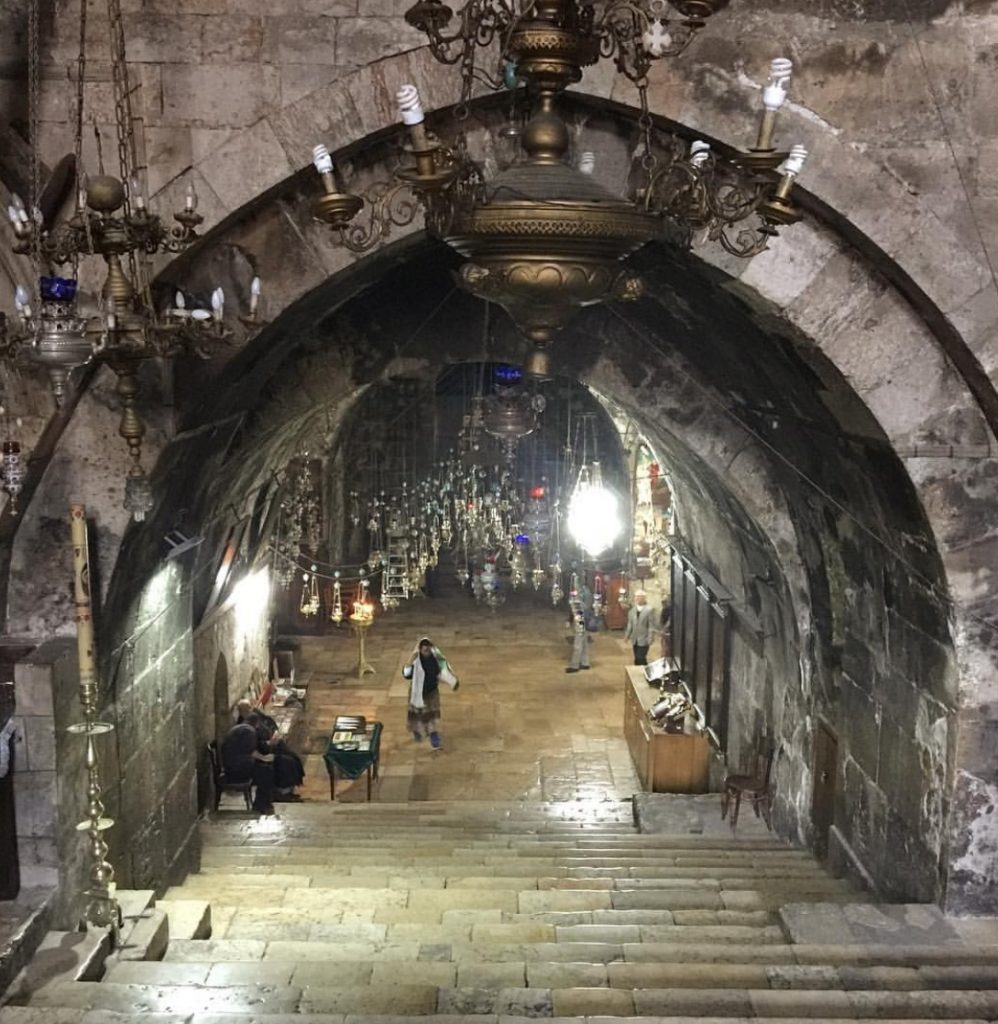
The Church of the Sepulchre of Saint Mary is a spectacular place of worship believed to have been the resting place of Mary, the mother of Jesus. Located at the foot of Mt. Olives in the Kidron Valley, 47 stairs lead down into the crypt of this Christian burial tomb and an underground church.
Each of us was excited to visit the Garden of Gethsemane which includes the garden, the cave and the Church of All Nations. For many of us, this was the site that we had been waiting to visit. With so much more to explore at this location, check out my upcoming post for Gethsemane.
What were your thoughts on your experience to the Mount of Olives? Or, if you have any questions about the local attractions listed here, please contact me as I would be happy to help! Many thanks for checking out my latest post during my visit to Jerusalem and wishing you many Happy Travels!
What to See and What to Do:
The Mount of Olives
Jerusalem, Israel
- Travel Tip: The best way to see the Mount of Olives is to start at the top of the hill and work your way down as the hill is quite steep. Take a taxi or board bus #75 from the station located on Sultan Suleyman Street.
Dominus Flevit Church
Jerusalem, Israel
Telephone: 972 2 6266450
*Administered by the Franciscan Custody of the Holy Land
- Admission: No admission fee but donations are welcome
- Hours: Open daily from 8 AM – 11:45 AM and 2:30 PM to 5 PM daily
- Scenic View: Spectacular view of Old Jerusalem and the Temple Mount
- Tips: The best time to visit is early in the morning when tour groups have not yet arrived. Modest dress is required should you decide to enter the church (shoulders and knees covered) .
Russian Orthodox Convent of St. Mary Magdalene
Jerusalem, Israel
Telephone: 972 2 6284371
*Administered by the Russian Ecclesiastical Mission
- Admission: No admission fee but donations are welcome
- Hours: Open 10 AM to noon on Tuesdays and Thursdays
- Scenic View: Lovely views of Old Jerusalem and the Temple Mount
- Tips: The best time to visit is early as the church is open with limited hours. Modest dress is required should you decide to enter the church (shoulders and knees covered).
The Tomb of the Prophets
Jerusalem, Israel
- Admission: No admission fee but donations are welcome
- Hours: While hours are not posted, they are usually available between 10AM and noon daily. Depending on the number of visitors, they may return in the afternoon.
- Scenic View: These catacombs are fascinating in themselves and require a light to explore the short loop. Candles provided at the entrance.
- Travel Tips: A visit to this site is hit or miss, but if you have the opportunity, you will not want to miss this experience.
The Church of Pater Noster
Jerusalem, Israel
Telephone: 972 2 6264904
- Admission: No admission fee but donations are welcome
- Hours: Open 8 AM to noon and 2 PM to 5 PM Monday through Friday
- Scenic View: There are over posted tiles with the Lord’s Prayer exhibited in over 100 languages
- Travel Tips: The best time to visit is early as the church is open with limited hours and then reopens in the afternoon. Modest dress is required should you decide to enter the church (shoulders and knees covered).
The Mosque of the Ascension
Jerusalem, Israel
- Admission: No admission fee but donations are welcome
- Hours: Open Sunday to Saturday from 8 AM to 6 PM
- Scenic View: A stone marks the supposed footprints of Jesus as He ascended to heaven.
- Tips: The best time to visit is early morning or late afternoon. Modest dress is required should you decide to enter the church (shoulders and knees covered).
The Church of the Sepulchre of St. Mary
Jerusalem, Israel
Telephone: 972 2 6284613
*Administered by the Brotherhood of the Holy Sepulchre
- Admission: No admission fee but donations are welcome
- Hours: Open 5 AM to noon and then 2:30 PM to 5 PM daily from April to September. The church opens at 6 AM from October to March
- Scenic View: The interior of the church is absolutely stunning!
- Tips: The best time to visit is early as the church is open with limited hours. Modest dress is required should you decide to enter the church (shoulders and knees covered).
Where to Stay:
The Olive Tree Hotel, Royal Plaza Jerusalem
23 St. George Street
Jerusalem, Israel
Telephone: 972 2 5410410
Where to Eat:
The Olive Tree Hotel, Royal Plaza Jerusalem
23 St. George Street
Jerusalem, Israel
Telephone: 972 2 5410410
The Olive Tree Hotel has an amazing buffet provided for dinner with a well-rounded offering of Israeli dishes and world-wide cuisine.
What to Eat:
- Kubbeh is similar to falafal in that it is served in a ball but made with meat and spices then deep fried.
- Manqusheh is similar to pizza made with flatbread topped with olive oil and spice (usually za’atar which is similar to thyme)
- Ka’ak is a large pretzel like pastry that is usually eaten at breakfast time. Crunchy on the outside and soft on the inside, they are readily available at bakeries and roadside stalls.
- Potato swirls are similar to french fries, cut and deep fried.
- Qatayef is a pancake-style dessert stuffed with cheese, nuts or sugar and spices and are popular during the Ramadan holiday
- Kunafeh is a pastry similar to baklava covered in syrup and cheese
What to Read:
- Khirbet Khizeh by S. Y. Yizhar
- The Hilltop, by Assaf Gavron
- Dancing Arabs by Sayed Kashua
- The People of Forever are Not Afraid, by Shani Boianjiu
- Five Seasons, by A.B. Yehoshua
- Twenty-One Stories by S. Y. Agnon
- Suddenly, A Knock on the Door by Etgar Keret
- Apples from the Desert, by Savyon Liebrecht
- From the Four Winds, by Haim Sabato
- To the End of the Land, by David Grossman
- A Tale of Love and Darkness, by Amos Oz
Photo Guide for Israel:
- The Western Wall for a religious experience
- Jaffa’s Old Town for its charm
- The Dead Sea for its interesting topography
- Caesarea Harbor and its Roman architecture and history are worth a visit
- Arbel National Park and Nature Reserve provides a phenomenal view of the Sea of Galilee
- The Church of the Holy Sepulchre in Old City Jerusalem is said to be the burial location of Jesus
- The view of the Temple Mount from the Mount of Olives
